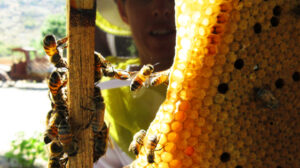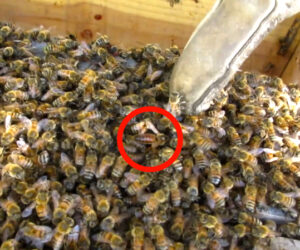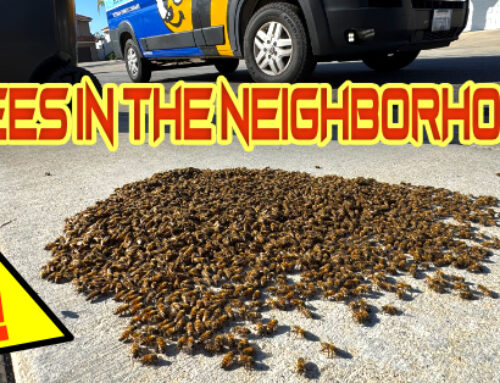In Southern California, Beekeepers face many challenges when managing their honeybee colonies. One of the biggest challenges is the threat known as the hybrid-africanized (Apis mellifera) bee. So what are hybrid bees? They are wild feral honey bees that thrive in our local environment. They often exhibit a range of aggressive and defensive behavior. Genetically they are the same as the honeybee that are used in an agricultural setting. Behaviorally however, they are much different.
You see, bees that are bred specifically for agricultural purposes are bred to be very docile. They are often more mellow in temperament and easier for beekeepers to work with in an agricultural setting. The hybrid bees in the environment here in San Diego however, are often much more defensive. These feral bees can often attack if approached in the wrong way.
Another way to describe the difference is by comparing them to the difference between a feral (wild) cat and a domesticated house cat. They basically look the same and are identical genetically, but try to pick up the feral cat and you will get a much different experience than that of picking up a domesticated house cat.
So why is this a challenge for beekeepers? Many of the hobbyist beekeepers in San Diego use swarms found in the environment for their private beehive at their home. Inexperienced beekeepers in San Diego are often caught off guard if they don’t take protective measures to prevent aggression in the colony. Every year we inevitably will get a call from a hobbyist beekeeper asking us to relocate their hive because the colony has suddenly become aggressive.
So what is the proper way to manage a hobby hive? How should a hobbyist beekeeper prevent their colony becoming Africanized?
The answer is to start with a docile hive. If the bees you use for your hive begin to display aggressive characteristics, its important to “Requeen” the colony. This entails removing the old queen that is laying Africanized eggs. The next step is to replace that queen with a genetically docile queen that will eventually lay genetically docile eggs. Those eggs eventually hatch and the colony becomes much easier (and safer) to work with again.
But where do you find a docile queen bee? Although you can sometimes get lucky and find a docile queens in the wild, most professional beekeepers order their queens from a lab or company online that breeds docile queen bees.
Once you have your new docile queen, the next step is to introduce her to the colony and hope she is accepted by them. Sometimes it takes one or two tries before a colony will take on a new queen. Once they do, there are still other steps that need to be taken in order to ensure the colony stays docile.
One of the biggest measures a beekeeper can take to keep their colony safe is to use a “Queen Excluder” in the hive box. A queen excluder is basically a screen that is added to the hive box that has gaps small enough to prevent her from leaving, but large enough for the smaller size workers to get through. This is an important measure so that the queen does not take flight from the box and mate with an Africanized drone in the wild. It also encourages the colony to stay in the box and build hive material there, instead of leaving for somewhere else.









